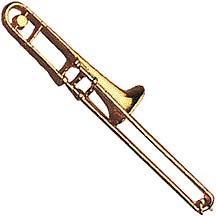| |
|
|
|
|
|
|
|
|
|
 |
| |
|
Avishai is born in the US and lives in Israel. He has a great passion for Beethoven and his suggestions and comments are always helpful and interesting. He is the dedicatee of Macbeth's overture, which has been recreated by Willem Holsbergen from Beethoven's sketches. Many thanks Avishai, for sharing with us the result of your research. |
Avishai Kallai and the statue of Jean Baptiste Bernadotte, outside the Royal Castle of Oslo |
|
|
| |
| Although Ludwig van Beethoven has long been credited with introducing the trombone section to the symphony orchestra, the little-known Swedish composer and conductor Joachim Nikolas Eggert preceded him in this accomplishment by 18 months! |  |
Eggert's
Biography
|
|
Eggert's Compositions Eggert's music career was short-lived, lasting barely a decade. Yet it was a decade in which his intense efforts did much to advance Swedish musical life. [20] The following list of works is his legacy: [21] 1 - Musical dramas.
2 - Cantatas and ceremonial music.
3e. Orchestral music.
4e. Chamber music.
5e. Other works.
If Eggert had lived and worked in a major musical center like Vienna or Paris, rather than the peripheral Stockholm, these compositions would surely be better known today. Unfortunately, Eggert's music undeservedly fell into oblivion and is seldom performed. |
|
Eggert's Symphonies
|
|
Eggert's E-flat Major Symphony
|
|
The Swedish Royal Court Orchestra
|
The Nordic Musicologists' Discussion Forum
|
|
The Norlind-Broman Article
{Part 1}
{Part 2}
|
The
Verification
On 20 May 1807, the Dagligt Allehanda published the following notice:
[Signed] J. Eggert [52] |
Conclusions
|
|
[1] Lennart Hedwall, Svensk Musikhistoria [Swedish History of Music], Edition Reimers (1996), 61-63. [2] Irmgard Leux-Henschen, "Joachim (Georg) Nikolas Eggert," Svensk Tidskrift for Musikforskning (henceforth STMf) [Swedish Journal of Music Research], XXXIV (1942), 86-87. [3] Birgit Guston, "Joachim Nikolas Eggert: Biografi," STMf, VII (1925), 18-19. [4] Ibid., 19. [5] Ibid. [6] Lennart Hedwall, Svensk Musikhistoria, Edition Reimers (1996), 61-63. [7] Guston, "Eggert," 20. [8] Ibid. [9] Kathleen Dale and Axel Helmer, "Joachim (Georg) Nikolas Eggert," The New Grove Dictionary of Music and Musicians, edited by Stanley Sadie, Macmillan (1980). [10] Lennart Hedwall, "'Gustafs skal' som symfonisats" ["'Gustaf's Toast' as a Symphonic Movement"], Hwad Behagas (The Bellman Society News Bulletin), 2 (2000). [11] Tobias Norlind and Sten Broman, "Eggert och Kuester," STMf, VII (1925), 50. [12] Dale and Helmer, "Eggert." [13] Stig Walin, "Joachim (Georg) Nikolas Eggert," Cappelens Music Dictionary, edited by Kari Michelsen, J. W. Cappelens Forlag (Oslo 1978), II, 334. [14] Hedwall, "'Gustafs skal.'" [15] Norlind and Broman, "Eggert och Kuester," 53. [16] Bertil van Boer, "Joachim (Georg) Nikolas Eggert," The New Grove Dictionary of Music and Musicians, edited by Stanley Sadie and John Tyrrell, Macmillan (2000). [17] Hedwall, Svensk Musikhistoria, 61-63. [18] van Boer, "Eggert." [19] Guston, "Eggert," 21-22. [20] Walin, "Eggert." [21] Norlind and Broman, "Eggert och Kuester," 60-62. [22] P. G. Bergfors, "Adolf Fredrik Lindblad," Toccata, http://www.toccata.nu/komp/lindblad.html, (1999). [23] Dale and Helmer, "Eggert." [24] Hedwall, Svensk Musikhistoria, 61-63. [25] van Boer, "Eggert." [26] The Symphony, 1720-1840, edited by Barry Brook, Series F Volume III. The Symphony in Sweden, part 2, edited by Bertil van Boer, Garland (New York 1983). [27] Ibid. [28] David M. Guion, The Trombone: Its History and Music 1697-1811, Gordon and Breach (New York, 1988), 275. [29] The Symphony, 1720-1840. [30] Hedwall, Svensk Musikhistoria, 61-63. [31] Guion, The Trombone, 271-283. [32] Ibid., 277. [33] Eva Block, ABL (Swedish Archive for Recorded Sound and Moving Images), personal communication to the author (8 June 2000). [34] J. Richard Raum, "The Eighteenth Century Trombone: Rumors of Its Death Were Premature," (part 1), Brass Bulletin, 77 (1992), 95. [35] Guion, The Trombone, 282. [36] Raum, "The Eighteenth Century Trombone," (part 1), 92-94. [37] Howard Weiner, "Andre Braun's Gamme et Methode pour les Trombonnes: The Earliest Modern Trombone Method Discovered," Historic Brass Society Journal, 5 (1993), 288-308. [38] Ottmar Schreiber, Orchestras and Orchestral Practices in Germany Between 1780 and 1850, Triltsch & Huther, (Berlin, 1938), 100-117. [39] Ibid. [40] Ibid. [41] Anna Lena Holm, senior librarian (rare collections), Music Library of Sweden, personal communication to the author (5-6 June 2000). [42] Bertil Van Boer, personal communication to the author (5-6 June 2000). [43] Norlind and Broman, "Eggert och Kuester," 50-51. [44] Ibid., 50. [45] Ibid., 51. [46] Lennart Hedwall, Den Svenska Symfonin [The Swedish Symphony], Almquist & Wiksell (Stockholm 1983). [47] Bertil Van Boer, personal communication to the author (5-6 June 2000). [48] Hedwall, Svensk Musikhistoria, 61-63. [49] Margarete Rehm, Information and Communication in the Past and Present, Humboldt University, (Berlin 2000). [50] Dagligt Allehanda, 106 (1807). [51] Dagligt Allehanda, 109 (1807). [52] Dagligt Allehanda, 113 (1807). [53] I am indebted to Hans Riben and Nicholas Eastop, curators of the Stockholm Music History Museum, for locating these three announcements for me. |
|
© Avishai Kallai, 2002
|
|
|
 |
|
|||||||||||||||||||